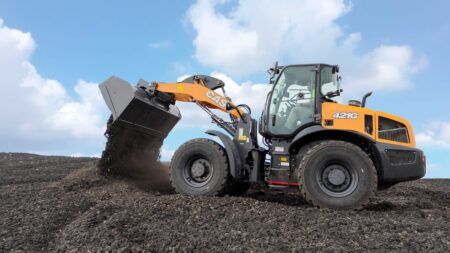When it comes to the automated operation of industrial vehicles, the received wisdom is that this is generally restricted to machines performing a fairly simple, relatively constant task along a pre-defined, often satellite-guided, route mining trucks, combine harvesters and warehouse AGVs spring to mind, for example.
So when Volvo CE invited me out to Sweden late last year for an exclusive look at its autonomous wheeled loader research project, it was hard to say ‘no’. With a range of applications as diverse as those of a tractor or backhoe loader, how on earth can such a vehicle perform without human intervention?
The answer to this and many other questions came from Torbjörn Martinsson, one of Volvo CE’s autonomous technology research engineers. Martinsson has spent the past five or so years working on the project, and for the past three of those years, he reveals, the OEM has been testing the machine, an L120, at an asphalt plant operated by one of its biggest Swedish customers: “The target from the beginning of the project was to do real work at this asphalt plant and achieve proof of concept, and in late 2013 we succeeded.”
So how do you operate a multipurpose vehicle autonomously? The secret recipe is, well, a recipe, says Martinsson because while wheeled loaders do have a wide range of applications, they’ll typically perform the same task over and over again, along a fixed route, for a relatively long time. “The customer uses 30 different recipes at the asphalt plant for various material sizes and textures. We followed recipe ABT11 for one hour and saw the productivity reach over 70% of what a skilled operator can manage.
“The tricky part is to fill the bucket, especially with processed material like stone flour, which is almost like concrete when it gets wet. And then you have large gravel which ‘floats’, so you need to have different strategies for different materials.
“The problem with working longer than an hour is that the piles will have drastically changed shape, so we are currently writing that software [in association with its research partners at Örebro University, Sweden, and Kaiserslautern University, Germany] by mid-2015 we hope to have developed an eight-hour operation platform.”
Wheely good?
So, given these obstacles, and Volvo’s wide range of machinery, why choose a wheeled loader at all? Wouldn’t one of its ADTs have given an easier route into the technology?
“Because this is more difficult!” Martinsson answers. “What we are developing here is 99% transferable to our hauler and we are now running a research project for automated haulers and excavators. An automated hauler is relatively simple it gets loaded, goes somewhere, empties it, goes back, and starts again you don’t need that filling phase control software. If we’d spent five years working on the hauler, we’d still need a lot more time to develop the loader.”
As the standard size of machine used in asphalt plants, as well as being in the middle of Volvo’s loader range, the 20-ton L120 was therefore the logical choice for the project. “From the L60 up to the L350 they’re quite similar in terms of the controls, etc,” explains Martinsson. “So to extend this to larger and smaller models would not be a big problem. The L60, for instance, is often used for grain handling, 10 hours a day and that’s much simpler than handling gravel.”
But even with the more complicated bucket-filling procedures at the asphalt plant, very little supervision is required the plant manager decides on a certain recipe, selecting the required materials, hoppers and production rate, presses the corresponding button and the machine quickly responds. And with its onboard weighing system, it can even be instructed to stop once the required tonnage has been transported. In fact, when the project began, there wasn’t even the need for an operator to drive the loader so as to ‘teach in’ the various courses and procedures for each recipe everything was controlled through the machine’s software.
You can read the full story in iVT March, which will be hitting desks early that month.




